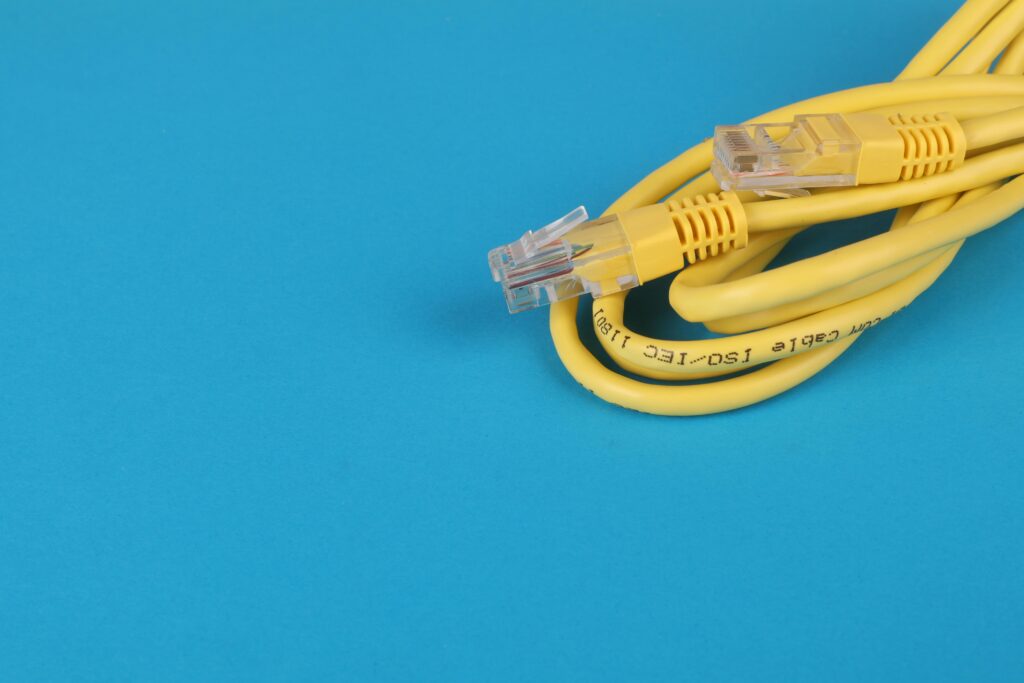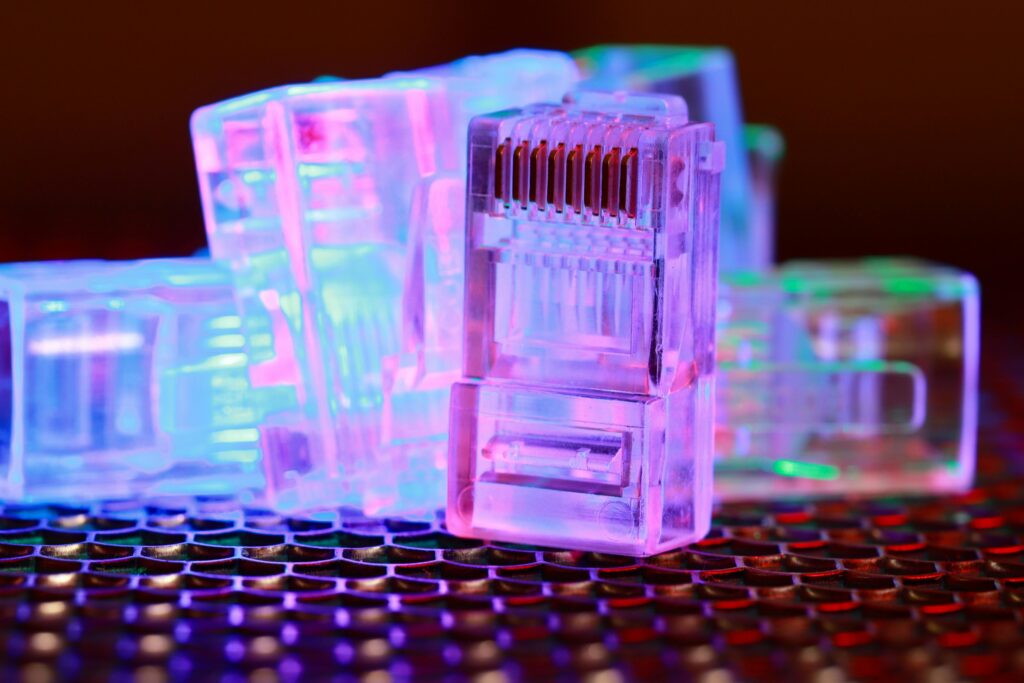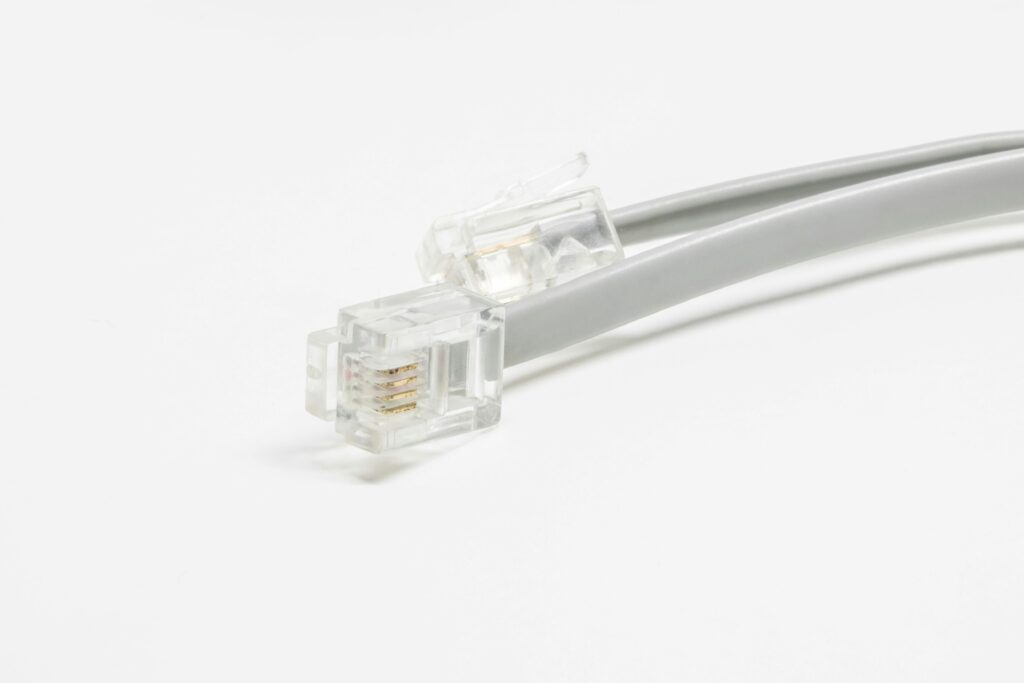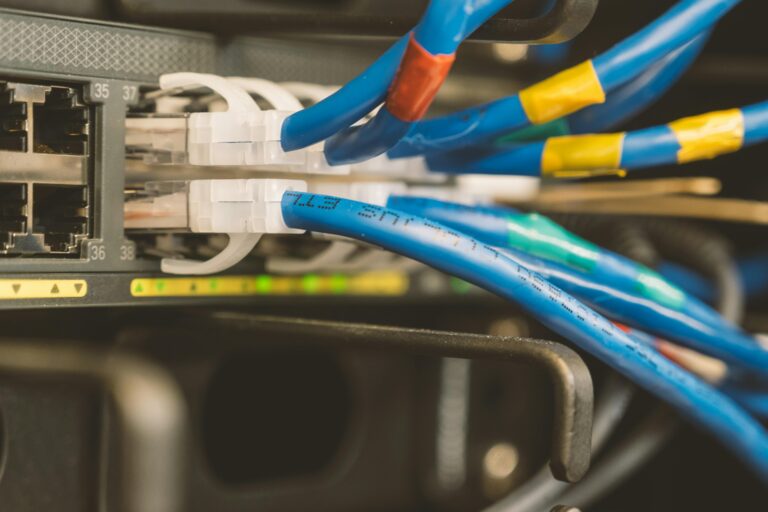Ever stood in the electronics aisle staring at rows of cables, wondering what the difference is between Ethernet and network options? You’re not alone. The Ethernet cable vs network cable debate confuses tons of people – and honestly, it shouldn’t be this complicated.
Here’s the thing most retailers won’t tell you upfront: Ethernet cables are actually a type of network cable. Think of it like this – network cable is the big umbrella, and Ethernet cable sits underneath it. However, understanding the specific differences between these cable types can save you money and ensure you get the right performance for your setup.
Whether you’re upgrading your home office or planning a commercial network installation, this guide breaks down everything you need to know about cable types, speeds, and which one fits your needs best.

What Is a Network Cable? (The Big Picture)
Network cable refers to any wire used to connect devices and transmit data between them. It’s the broad category that includes several different cable types, each designed for specific networking tasks.
Network cables encompass everything from fiber optic cables in data centers to the twisted pair cables connecting your laptop to the router. These cables form the backbone of our connected world, carrying everything from your Netflix stream to critical business data across local area networks and beyond.
Types of Network Cables You’ll Encounter
The network cable family includes several key players:
Fiber optic cables use light signals to transmit data at incredible speeds over long distances. You’ll find these in commercial network setups and internet service provider infrastructure. They’re immune to electromagnetic interference but cost more and require specialized equipment.
Coaxial cables carry data using copper wire surrounded by insulation and shielding. Cable internet providers use these extensively, and they’re common in older network installations. They’re sturdy but limited in speed compared to modern alternatives.
Twisted pair cables feature pairs of copper wires twisted together to reduce interference. This category includes Ethernet cables, telephone wires, and other copper-based network connections used in most homes and offices.
Understanding Ethernet Cable: The LAN Specialist
An Ethernet cable is a specific type of network cable designed for local area network (LAN) connections. These cables use twisted pair technology and connect to devices through RJ45 connectors – those plastic clips you’ve probably seen countless times.
Ethernet technology follows strict standards that ensure compatibility across different manufacturers and devices. When you plug an Ethernet cable into your router, switch, or computer, you’re creating a dedicated connection within your local network.
Key Features of Ethernet Cables
Standard Ethernet cables come in several categories, each offering different speeds and capabilities:
Cat5e cables handle speeds up to 1 Gbps and work well for most home networks. They’re affordable and sufficient for streaming, gaming, and general internet use within a local area network.
Cat6 cables support speeds up to 10 Gbps over shorter distances. These cables offer better shielding against interference and represent the sweet spot for modern network installations.
Cat6a and higher categories push speeds even further, supporting 10 Gbps over longer distances. Commercial network environments often use these for future-proofing their infrastructure.
Ethernet cables also support Power over Ethernet (PoE), allowing them to carry both data and electrical power to connected devices like security cameras and wireless access points.

Key Differences Between Network Cable and Ethernet Cable
Understanding the relationship between these cable types helps you make smarter purchasing decisions. Here’s where things get interesting – and where many people get confused.
Scope and Application
Network cable is the umbrella term covering all cables used to connect devices in a network. An Ethernet cable sits under this umbrella as one specific branch of network cable technology.
When someone says “network cable,” they might mean Ethernet, fiber optic, coaxial, or any other cable used for data transmission. However, when they specify “ethernet cable,” they’re talking about twisted pair cables designed for LAN connections.
Speed and Distance Capabilities
Different network cable types excel in different scenarios. Fiber optic cables dominate long-distance, high-speed applications. They can transmit data across miles without signal degradation and handle massive bandwidth requirements.
Ethernet cables work best within a local network, typically covering distances up to 100 meters before signal quality degrades. However, modern Ethernet categories like Cat6a offer impressive speeds that rival fiber optic performance over shorter distances.
Coaxial cables fall somewhere in the middle, offering decent speeds over moderate distances but lacking the performance ceiling of fiber or modern Ethernet options.
Cost and Installation Complexity
Standard Ethernet cables are generally the most cost-effective option for LAN connections. They’re easy to install, widely available, and work with standard networking equipment most people already own.
Fiber optic cables cost more upfront and require specialized networking equipment. However, they offer superior performance and future-proofing for high-demand applications.
The installation complexity varies significantly. Ethernet cables plug directly into standard ports, while fiber optic installations often require professional network installation services.
When to Choose Ethernet Cable vs Other Network Options
Your specific network environment determines which cable type makes the most sense. Let’s break down the scenarios where each option shines.
Ethernet Cable: Perfect for These Situations
Choose Ethernet cable when you’re connecting devices within a LAN and need reliable, fast connections. Gaming setups benefit enormously from wired LAN connections – you’ll get lower latency and more stable speeds than WiFi.
Home offices work great with Ethernet cables, especially if you’re doing video calls, large file transfers, or other bandwidth-intensive tasks. The dedicated connection ensures consistent network performance.
Small to medium business networks rely heavily on Ethernet infrastructure. These cables offer the right balance of performance, cost, and ease of installation for most commercial network needs.
When Other Network Cable Types Make More Sense
Fiber optic cables become necessary when you’re covering long distances or need maximum speed. Data centers, internet service providers, and large commercial network installations typically require fiber infrastructure.
Building-to-building connections often need fiber optic cables to maintain signal integrity over longer distances. Ethernet cables would lose too much signal strength for these applications.
High-interference environments favor fiber optic solutions because they’re immune to electromagnetic interference that can disrupt copper-based cables.

Types of Ethernet Cables: Finding Your Perfect Match
Not all Ethernet cables are created equal. Understanding the categories helps you choose the right cable for your specific network needs.
Category 5e (Cat5e): The Budget Champion
Cat5e cables handle most home network tasks without breaking the bank. They support gigabit speeds and work perfectly for streaming, web browsing, and light gaming within a local area network.
These cables use four twisted pairs of copper wire and can transmit data up to 100 meters. For many users, Cat5e provides all the performance they need at the lowest price point.
Category 6 (Cat6): The Sweet Spot
Cat6 cables offer improved shielding and can handle 10 Gbps speeds over shorter distances. They’re becoming the standard for new network installations because they provide excellent future-proofing without excessive cost.
The enhanced construction reduces interference and crosstalk, making Cat6 ideal for environments with multiple cables running close together.
Category 6a and Beyond: Future-Proof Performance
Cat6a cables maintain 10 Gbps speeds over the full 100-meter Ethernet distance. They feature heavier shielding and larger cable diameter but deliver professional-grade performance.
Cat7 and Cat8 cables push performance even further, though most users won’t need these capabilities unless they’re running high-demand commercial network applications.
Network Installation: Professional vs DIY Approaches
Installing network cables requires different approaches depending on your scope and technical comfort level.
DIY Ethernet Installation
Most Ethernet cable installations are straightforward DIY projects. You’ll need basic tools like cable crimpers, RJ45 connectors, and a cable tester to ensure proper connections.
Running cables through walls or across long distances gets more complicated but remains manageable for handy homeowners. Planning your cable routes and using proper cable management prevents issues down the road.
When to Call the Professionals
Complex commercial network installations benefit from professional network installation services. Experienced technicians understand building codes, proper cable management, and testing procedures that ensure reliable network performance.
Large-scale installations involving multiple cable types, patch panels, and network infrastructure require expertise to execute properly. Professional installers also provide warranties and ongoing support for their work.
Troubleshooting Common Cable Connection Issues
Even the best cables can develop problems over time. Knowing how to identify and fix common issues saves time and frustration.
Signal Quality Problems
Poor connections often cause intermittent network issues. Check that cables are properly seated in their connectors and look for visible damage like kinks or cuts in the cable jacket.
Cable length matters more than many people realize. Ethernet cables lose signal strength over distance, so long runs may need signal boosters or different cable categories to maintain performance.
Interference and Environmental Factors
Electromagnetic interference from other electronics can disrupt cable signals, especially with lower-grade cables. Moving cables away from power lines, fluorescent lights, and other interference sources often resolves connection issues.
Temperature extremes and moisture can degrade cable performance over time. Outdoor installations need weatherproof cables rated for environmental exposure.
Cost Analysis: Network Cable Investment Strategies
Understanding cable costs helps you budget appropriately and avoid overspending on unnecessary performance.
Budget-Friendly Options
Cat5e Ethernet cables offer the best value for basic network needs. They handle gigabit internet connections and work perfectly for most home applications at the lowest cost per foot.
Buying cables in bulk reduces per-unit costs significantly. If you’re wiring multiple rooms or planning future expansions, purchasing longer lengths or multiple cables together saves money.
Premium Performance Investments
Cat6 and Cat6a cables cost more upfront but provide better long-term value through improved performance and future-proofing. The price difference often makes sense for new installations or network upgrades.
Fiber optic cables represent the highest initial investment but offer unmatched performance for demanding applications. Consider fiber for backbone connections in large networks or situations requiring maximum speed.

Future-Proofing Your Network Infrastructure
Technology evolves rapidly, so planning prevents costly upgrades later.
Choosing Cables for Tomorrow’s Needs
Internet speeds continue increasing, and connected devices multiply yearly. Installing Cat6 or Cat6a cables today prepares your network for future bandwidth demands without requiring complete rewiring.
Consider your growth plans when selecting cable types. Adding network devices, upgrading internet service, or expanding to new areas becomes easier with properly planned cable infrastructure.
Emerging Technologies and Standards
New Ethernet standards continue pushing speed boundaries. Cat8 cables support 40 Gbps speeds, though few applications currently need this performance level.
Wireless technology improves constantly, but can’t match the reliability and speed of properly installed wired connections. A solid cable foundation supports both wired and wireless devices effectively.
FAQ’s
Is an Ethernet cable the same as a network cable?
Ethernet cable is a specific type of network cable, but not all network cables are Ethernet cables. Network cable is the broader category that includes Ethernet, fiber optic, coaxial, and other cable types used to connect devices in a network.
Which cable type offers the best performance for gaming?
Standard Ethernet cables provide the most reliable gaming performance for most users. Cat6 Ethernet cables offer excellent speed and low latency, making them ideal for competitive gaming where every millisecond counts.
How do I know what category of Ethernet cable I need?
Cat5e handles most home network needs, while Cat6 provides better future-proofing and performance. Choose Cat6a or higher only if you need 10 Gbps speeds over longer distances or have specific commercial network requirements.
Final Thoughts: Making the Right Cable Choice
The Ethernet cable vs network cable question doesn’t have to be complicated. Remember that Ethernet cables are simply one type of network cable – they’re the go-to choice for most LAN connections because they offer the right balance of performance, cost, and ease of installation.
For most homes and small businesses, Ethernet cables provide everything you need for reliable network connectivity. They’re affordable, easy to install, and handle current internet speeds with room to grow.
When planning your network infrastructure, focus on your actual needs rather than maximum theoretical performance. A well-planned Ethernet cable installation using quality Cat6 cables will serve most users excellently for years to come.
Choose the appropriate cable for your specific situation, and don’t hesitate to consult networking professionals for complex installations. The right cable choice today prevents headaches and expensive upgrades tomorrow.

eokg4m